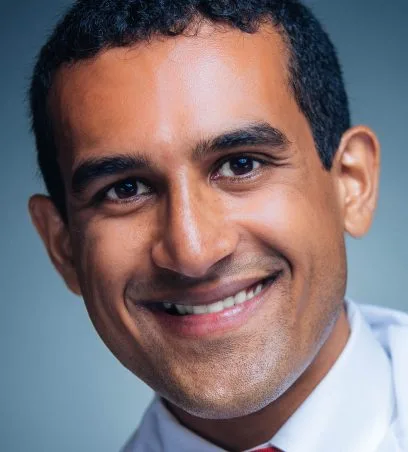
18 Nov Penn Study finds Inequities In Access to Heart Procedure TAVR
MedicalResearch.com Interview with:

Dr. Ashwin Nathan
Ashwin Nathan, MD, MSHP
Assistant Professor, Medicine, Perelman School of Medicine
Interventional Cardiologist
Hospital of the University of Pennsylvania and at the
Corporal Michael C. Crescenz VA Medical Center in Philadelphia
Penn Cardiovascular Outcomes, Quality & Evaluative Research Center
MedicalResearch.com: What is the background for this study? What are the main findings?
Response: We found that the rates of TAVR were lower in areas with higher proportions of Black, Hispanic and socioeconomically disadvantaged patients. Inequities in access in areas with higher proportions of Black and Hispanic patients existed despite adjusting for socioeconomic status.
MedicalResearch.com: What should readers take away from your report?
Response: Even when patients have geographic access to TAVR, there appear to be inequities in access to the procedure among Black, Hispanic and socioeconomically disadvantaged patients.
MedicalResearch.com: What recommendations do you have for future research as a result of this work?
Response: The etiology for the inequities in access is likely multifactorial. TAVR is the last step in a complex and multi-step diagnostic/referral pathway that starts with health maintenance in a primary care office, and includes subspecialty referral, multiple imaging and diagnostic tests and ultimate referral for TAVR. Where the “lesion” is in this pathway that is causing inequities in access needs to be studied more so that solutions can be developed to address the inequity
I have no disclosures.
Citation:
Nathan AS, Yang L, Yang N, et al. Racial, Ethnic, and Socioeconomic Disparities in Access to Transcatheter Aortic Valve Replacement Within Major Metropolitan Areas. JAMA Cardiol. Published online November 17, 2021. doi:10.1001/jamacardio.2021.4641
https://jamanetwork.com/journals/jamanetworkopen/fullarticle/2786200
[wysija_form id=”3″]
[last-modified]
The information on MedicalResearch.com is provided for educational purposes only, and is in no way intended to diagnose, cure, or treat any medical or other condition. Always seek the advice of your physician or other qualified health and ask your doctor any questions you may have regarding a medical condition. In addition to all other limitations and disclaimers in this agreement, service provider and its third party providers disclaim any liability or loss in connection with the content provided on this website.
Last Updated on November 18, 2021 by Marie Benz MD FAAD
